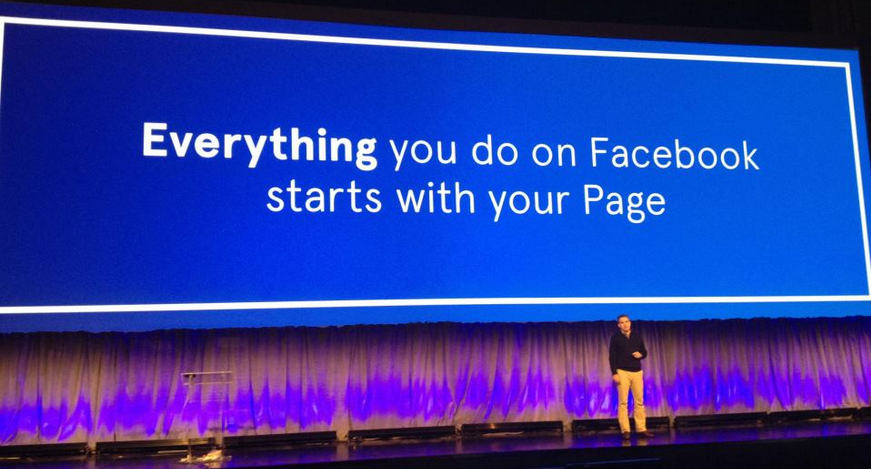With Facebook recently announcing another iteration to the newsfeed, it can be difficult to keep up with the world’s biggest social network. Unless you’re the likes of Apple, most brands realistically need to be using Facebook as part of their marketing mix. But many have trouble finding their voice and growing their community.
To combat this, I’ve put together five key things to remember for brilliant brand pages. Hopefully, this should hold some relevancy for everyone using Facebook for marketing, from high level community managers to small SMEs starting out on social.
1: Adhere to competition rules
So all I have to do is like and share to win a free iPad/Xbox/llama you say? Sure!
Some don’t realise, and some do but continue undeterred, that Facebook disallows any competitions that ‘use native Facebook functionality as a basis for entry’. Yes, this includes liking an update, commenting on an update, sharing an update etc.
Unfortunately, Facebook doesn’t patrol this very well, but brands can very quickly have their page shut down if caught. Basically all competitions must be run by an Facebook app. This means it is technically off Facebook’s platform, and won’t land the site in trouble if a competition goes awry. Your page must also acknowledge that the promotion is not sponsored, endorsed, administered by or associated with Facebook, and you also cannot notify contest winners through Facebook (wall post, message, chat).
Complete page rules can be found here, and there are plenty of excellent agencies that will develop a bespoke app for you, and plenty of simple to use, low cost, third party apps you can use too, like Wildfire, Involver or Short Stack.
2: Remember, it’s not free!
Ah social media, the best free marketing tool out there eh?
Despite what the ‘gurus’ may tell you, social, and particularly Facebook does cost. Of course at base level, there’s the cost of a moderator to manage the community, but along with that, think of the cost of developing page tabs, creating branded imagery for your page, and, crucially, advertising.
Brands, no matter how big or popular, are finding it more and more difficult to gather organic likes. Particularly when your page is small, it can be very difficult to grow quickly. Spending on targeted advertising (every good brand should have a good profile of what type of fan they want to attract), will prove fruitful, and the viral effect of increasing fan numbers and fan’s notifications going into their friends newsfeeds will also add to the overall increase in likes.
The myriad of Facebook advertising options is now huge, so take some time to teach yourself a bit about it if you’re a novice, but don’t forget to include mobile in your options.
3: Optimise your posts
It figures that long, rambling posts don’t work on Facebook. Attention spans online are dropping all the time, and nobody likes having their timeline filled with irrelevant, lengthy content. As with most sites, short, punchy copy is vital. While you may be offered 140 characters on Twitter, studies have shown that on Facebook, posts less than 80 characters receive far higher engagement than those above that level. Now that’s not a hard and fast rule, but keep it in mind when devising your content plan.
Likewise, there are lots more simple things to remember when posting as a brand. Multimedia, and specifically good imagery, garners a much higher engagement rate than text only posts. Even video has been shown to not be as attractive as a good image, as users are generally driven off Facebook to YouTube upon click. This is particularly relevant when on mobile, though obviously video can play a major part in any good content strategy.
Similarly, brands should attempt to keep their fans on Facebook as much as possible. Developing page tabs with info from your website is easy these days, as is optimising for mobile, so staying native is best practice.
Brands are also advised to not post more than twice per day, as pages that update more frequently than this actually see a drop off in engagement, not an increase.
Variety is vital, so pepper your fans with plenty of polls, questions etc, and don’t be afraid to ask for an action. Again, numerous studies have shown that offering a call to action (‘LIKE if you agree’, ‘COMMENT with your thoughts’ or ‘FILL in the blank’) is powerful. Don’t oversell, make content fun and shareable, and focus on talking with your fans, not at them.
4: Don’t ignore Insights
Data seems to be a buzzword in marketing circles at the minute, but as with all types of advertising or marketing, it’s vital to know where you’re going wrong, what sort of purchase behaviours your efforts are leading to and what fans think of you. Facebook’s built in Insights tool may have some limitations (it’s generally around 48 hours behind real time), but it does offer some easy wins for deciphering how your page is performing. Metrics like ‘talking about this’ are vital, while page reach, though sometimes used for vanity purposes, can also tell you how many prospective customers are in your network, and how viral your page is.
The real value comes for those who are relatively proficient in Excel though. Exporting monthly reports at page and post level can provide a daunting amount of data, but offer amazing insights. For example, is there a specific timing that your content gets better interaction? Is there a specific type of content that your fans like, or have there been lots of unlikes to your page on a specific day in the past month?
This isn’t data scientist stuff, a little digging will offer you some golden nuggets.
5: Don’t go off brand, and strive to entertain
Before you start planning content, take a look at a page called ‘Condescending Corporate Brand Page‘. A spoof page sending up shocking brand posts, this should serve as a ‘what not to do’ example.
Boring is a cardinal sin. Fans are on Facebook to be entertained, so even the most mundane brands should be able to find something exciting, endearing, or funny for content. Facebook isn’t a business-focused network, so don’t treat it like that, and being too sales focused is also not advised. 1-2 sales focused updates per week are enough generally.
Concurrently, while funny, off brand posts can get you lots of those sought after likes, it can also confuse fans, and take the focus away from your core message. A happy medium exists in merging meme type content with your core brand message and imagery, and again, variety and freshness is also key. After all, Facebook is a brand equity and engagement building channel.
Some examples…
Building a tuned-in community of Facebook fans can seem difficult at times, but by creating great, relevant content, using targeted advertising and portraying your brand as fun, entertaining and human, anyone can see success.
Brands to take a look at from a best practice point of view would include Paddy Power, Samsung Mobile USA, McCambridges, Oreo and Converse, while it’s also important to state that a half-assed strategy isn’t going to win you any friends. Go hard or go home as they say!
Take a look at Facebook’s advertising advice page for more, including some excellent case studies.












